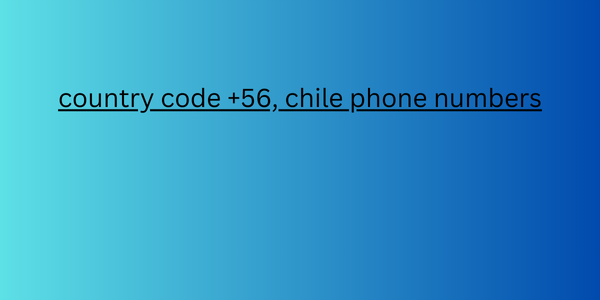Types of pop-ups country code +56, chile phone numbers details Objective effectiveness
Pop-up list Appears when a user visits your website and is used for various purposes, such as highlighting promotions or introducing new products. Difficult to use because it can make or break a user's trust in your brand. Promotion highlights, introducing new products, building trust Moderately effective
Scroll-triggered pop-ups Appears when a visitor scrolls down a given percentage of a page, presenting relevant content or offers as the visitor engages with your site, entering the viewpoint of users interested in your products. Provide relevant content, attract visitors, collect user data. Highly efficient
Scheduled pop-ups Displayed after a user has spent a specified amount of time on a page, it allows you to engage visitors who have been on your website for a while but haven't taken any action. Use it to grab their attention by offering them an offer, a newsletter signup, or other intended goal. Re-engage visitors, generate interest, promote offers and registrations. Moderately effective
Pop-up intentionally exits Occurs when a user is about to leave your website. Offer a last minute incentive to encourage visitors to stay or take an action. Great for reducing cart abandonment rates. Has a conversion rate of 2–4% which definitely works. Prevent abandonment, promote action, effectively reduce cart abandonment Highly efficient
Reasons Why You Should Use Pop-ups on Your Website
Love them or hate them, pop-ups appear on almost every website because they work.

We've looked at conversion rates and how marketers use conversion rates to drive users to take specific actions or achieve goals.
But if you’re still not convinced, here are three reasons to run a pop-up campaign on your website.
Create an email list
Users are more likely to sign up for your newsletter or give you their email address when they consume the content on your site and get more out of it.
So your best bet is to nudge them with a pop-up when they leave your site or after spending a lot of time on it.
With Google Analytics' path system, you can find the average time users spend on each page of your website, then schedule your popups accordingly.
Try not to shove pop-ups in users’ faces right after they land on your site. Not only will this frustrate users, it will also encourage them to close the pop-up or leave the site altogether.
Time is the key to building trust.
Reduce bounce rate
Use exit-intent popups to target visitors who are about to leave your website. You can give them one last push to promote content, offer a discount, or ask them to sign up for your newsletter.
Countdown timers work especially well in cases like this, as they create a sense of urgency in users and get them to take action as soon as possible.
